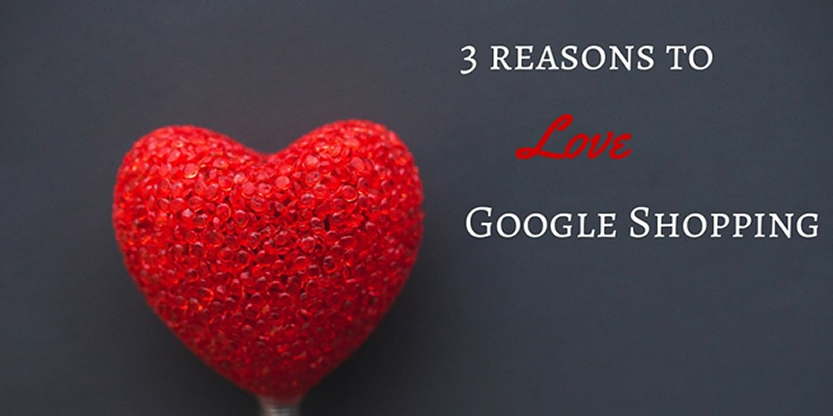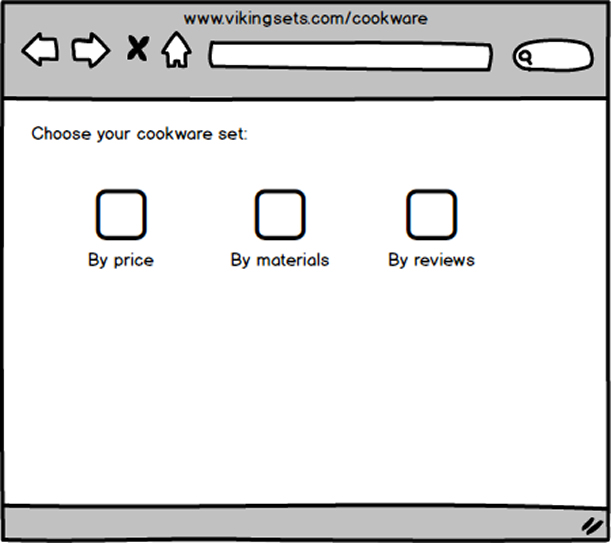3 Reasons to Love Google Shopping Right Now

There are so many reasons to love Google Shopping: more exposure in the search results against some of your biggest competitors – including Amazon – is just one of ‘em.
But today, we want to specifically highlight three benefits of Google Shopping, including some pretty cool developments that are happening in the world Product Listing Ads (PLAs).
1. More Exposure in the Search Results
Few things illicit more panic amongst search advertisers than the broad match setting when running text ads on the Google Search Network. But, in Google Shopping, broad match is your friend. Yep, it’s true, and here’s why …
PLAs are served up based on your Merchant Center data feed and the attributes you define there – but Google takes it a step further with a broad match approach to try to serve up the most relevant PLA in the search results, and that can be a win for advertisers.
Say someone is looking for shoes by the fictional retailer Italia Leather Co., but another company – Global Fashion – had bought out Italia a year ago. That shopper may not know that, and still be searching for the model of shoe they want.
Because Google’s algorithms can be very sophisticated, a PLA for the very shoe that person is looking for could come up – regardless of whether or not the shopper typed in the new model or brand name.
The point being: If you’re an advertiser, your PLAs can be eligible to show for many different scenarios you many not have ever thought of – and that’s a good thing.
The fact that PLAs have a picture of the product along with the price helps to qualify those shoppers before they click through, so it’s a little less scary than a broad match text ad.
A word of caution, however, that you want to still be sure to optimize your product pages well and add negative keywords so you don’t come up for completely irrelevant searches or you’re just wasting money. More on that in an earlier post here .
Oh – and how cool is this: In January 2016, folks spotted a test that would possibly expand the area that PLAs could take up in the Google Search results:

More search results real estate gives retailers a competitive edge. Although, as ChannelAdviser pointed out (the folks who spotted the test), if this goes through, click-through rates could be impacted with so many additional retailers in the mix.
2. More Exposure Across the Web
A few expansions have been made available to Google Shopping campaign managers, and it’s growing exposure for retailers’ PLAs beyond the Google Shopping search results.
AdSense for Shopping rolled out in 2014, and in 2015, Google Shopping ads on YouTube officially launched. Not to mention that PLAs can show up in Google’s Image Search as well.
From the Google help files:
"Here's where you might see your Product Listing Ads across the web:
- Google Shopping (in select countries)
- Google Search, next to search results and separate from text ads
- Google Search Partner websites, including YouTube and Image Search in some countries (if your campaign is set to include search partners)
Your Product Listing Ads can appear at the same time as text ads, because we want to give shoppers access to the full variety of products that match their search. This means that shoppers can find the best match before clicking through to make a purchase, which might help you close the sale."
Research data from Merkle as reported by Search Engine Landshows that:
"Across all devices, PLAs overall accounted for 38 percent of retailers’ Google search ad clicks in Q4, up from 30 percent a year earlier. PLA spend on mobile increased by 208 percent year over year, due in large part to the introduction of bigger PLA formats on smartphones."
Google Shopping campaigns are getting hotter every year. Bottom line: As a retailer, it’s one place you simply need to be.
3. More Data Mining = More Ideas for Other Campaigns
Think of your Google Shopping campaigns as a laboratory. You can discover interesting keywords driving search traffic that you may not have thought of. Then, you can take this data and get creative with your text ads and landing pages.
Here’s how using a generic example:
Let’s say you sell 30 different types of Viking cookware sets. A shopper searches for “Viking cookware sets” but they’re not quite ready to buy because they don’t know the types they want yet – they are in the research phase.
Nevertheless, you see a lot of traffic coming in on your PLAs for “Viking cookware sets” over time. This gives you an idea.
Aside from just blocking out phrases in your negative keywords that don't fit your product’s page, you can also see which search terms might do well in a text ad if shoppers were directed to a specific landing page that helped the shopper choose which type of thing they were looking for.
So you decide to take that data and create a Search Network campaign for that keyword phrase, and you create a special category-level landing page that helps the shopper determine where to go next in their journey:
Because your text ads are eligible to show up on the same search results page as your PLAs, it’s possible that you have a better chance of not only driving shoppers to your site, but also keeping them on your site longer and producing a sale with this technique.
So if you’re running Google Shopping campaigns, don’t forget to use the data you gain to inform other paid search avenues as well. This type of data mining can lift the revenue you see coming from your online advertising.
These are just three of the reasons we love Google Shopping campaigns right now. What are yours?
